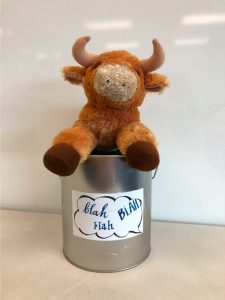
A Guide to Extempore Commons
Extempore Commons, our robust library of importable practice and assessment content for both ESL and…
 This activity encourages students to stay in the target language throughout the entire class. It also keeps students focused as they listen and keep each other in check. This is actually an activity I do every class.
This activity encourages students to stay in the target language throughout the entire class. It also keeps students focused as they listen and keep each other in check. This is actually an activity I do every class.
 For this activity, students form teams of three. You can have smaller or bigger teams if necessary. The goal is for one team to describe what is in the box to the opposing team members. The other team has to decide if the team is telling the truth or lying. I find that this activity works for upper level classes as students have more vocabulary and tenses to work with, including impersonal expressions such as: One must _________... You use this to __________.
For this activity, students form teams of three. You can have smaller or bigger teams if necessary. The goal is for one team to describe what is in the box to the opposing team members. The other team has to decide if the team is telling the truth or lying. I find that this activity works for upper level classes as students have more vocabulary and tenses to work with, including impersonal expressions such as: One must _________... You use this to __________.

 Have you ever played the game at a baby shower when you are handed clothespins and if you say the word “baby”, someone can take it from you? Then, the person with the most pins at the end wins a prize.
Give each of your students 3-5 clothespins, and explain the rules. This activity really stretches them and helps them stay in the target language. Sometimes students struggle, and that’s ok! It’s part of language acquisition. I am not big into prizes, but you could definitely offer that as an incentive for some age groups. Sometimes I give an extra point or 2 on the next assessment.
Have you ever played the game at a baby shower when you are handed clothespins and if you say the word “baby”, someone can take it from you? Then, the person with the most pins at the end wins a prize.
Give each of your students 3-5 clothespins, and explain the rules. This activity really stretches them and helps them stay in the target language. Sometimes students struggle, and that’s ok! It’s part of language acquisition. I am not big into prizes, but you could definitely offer that as an incentive for some age groups. Sometimes I give an extra point or 2 on the next assessment.
 This post is courtesy of Andrea Nazelli who is the Spanish department chair and teacher at Detroit Country Day School.
Want to read more great content by Andrea? Take a look at her previous blog post: ALL-IN-ONE ACTIVITY FOR THE WORLD LANGUAGE CLASSROOM: YES. NO. MAYBE?
This post is courtesy of Andrea Nazelli who is the Spanish department chair and teacher at Detroit Country Day School.
Want to read more great content by Andrea? Take a look at her previous blog post: ALL-IN-ONE ACTIVITY FOR THE WORLD LANGUAGE CLASSROOM: YES. NO. MAYBE?


